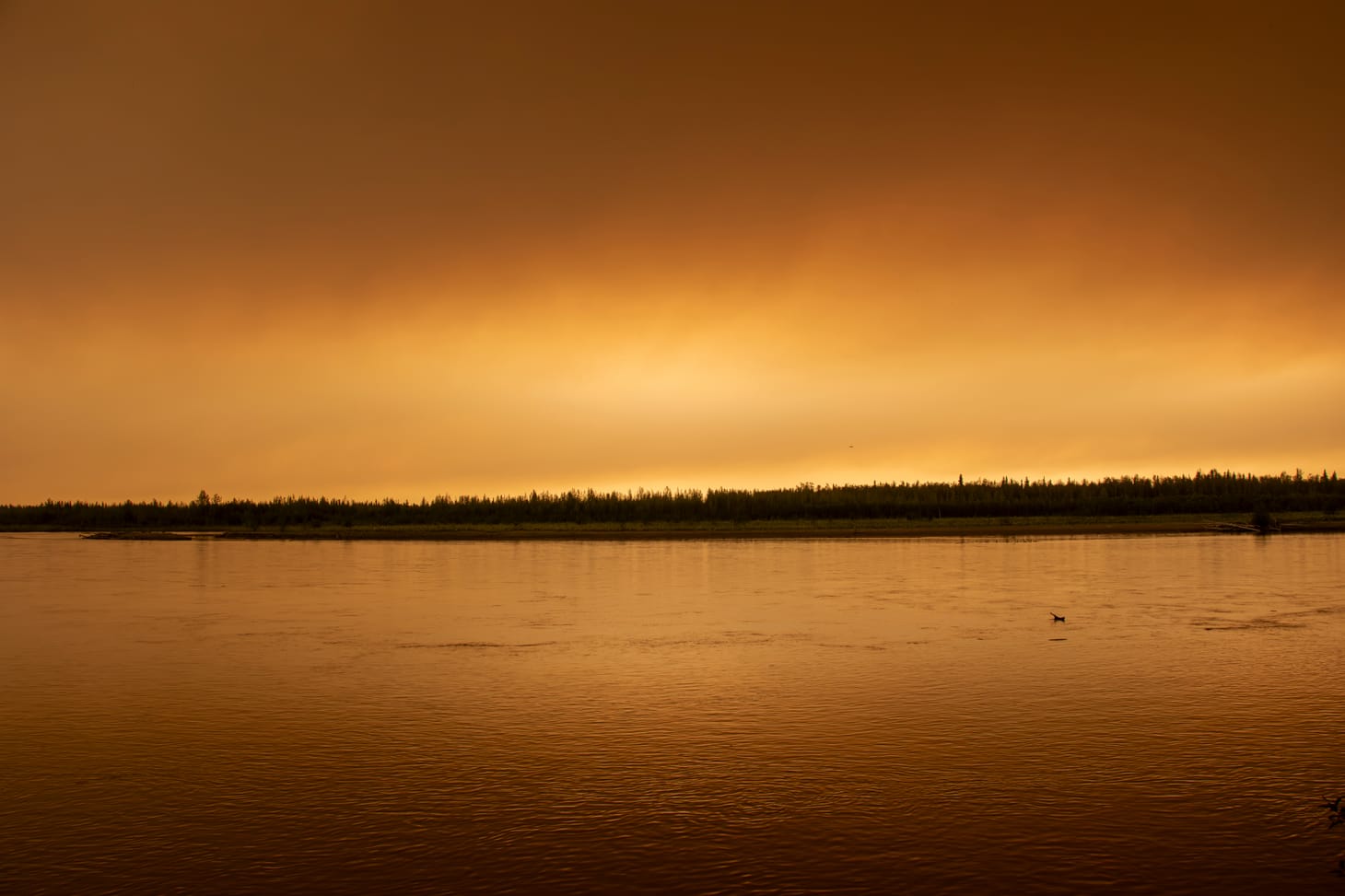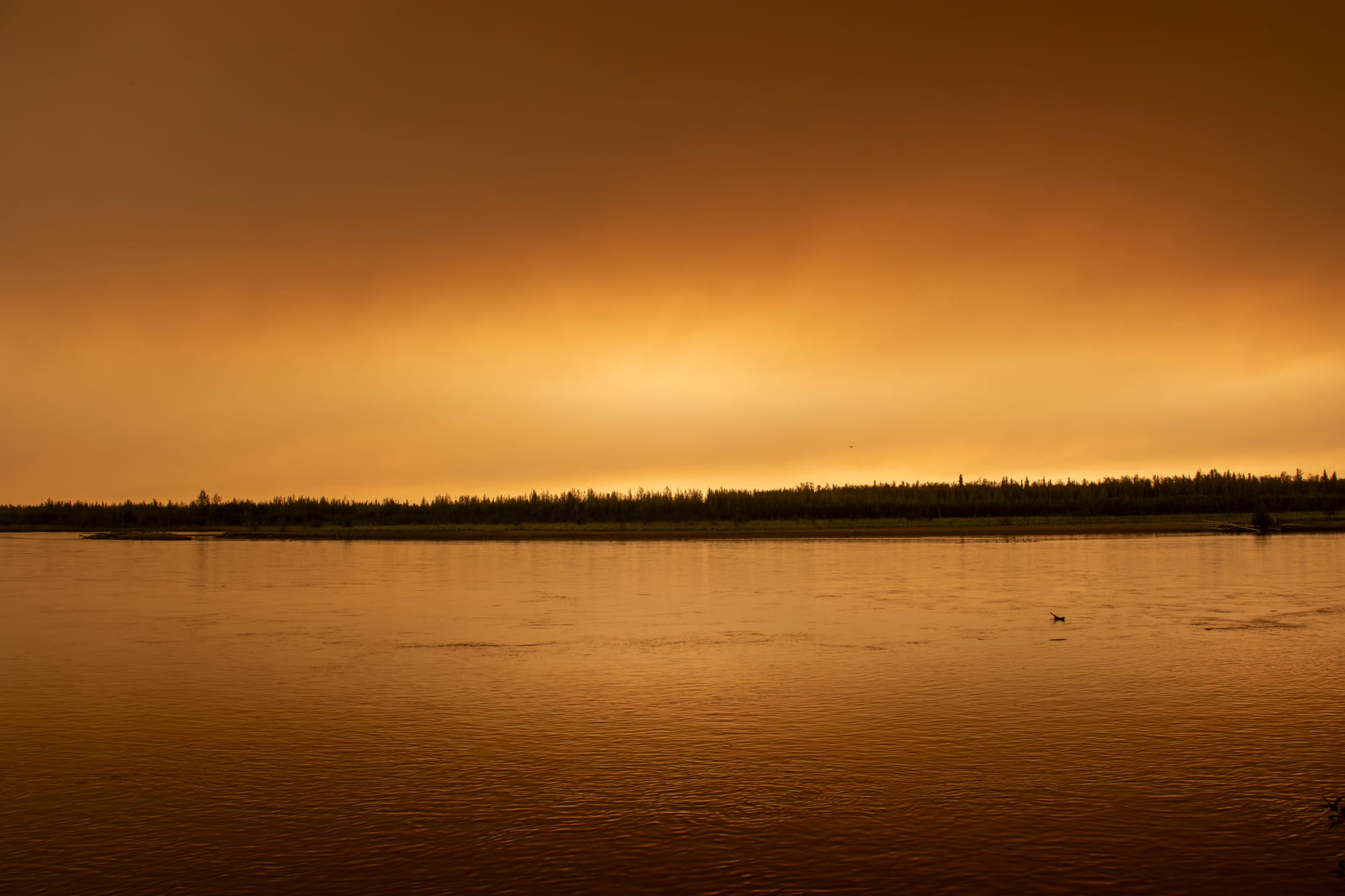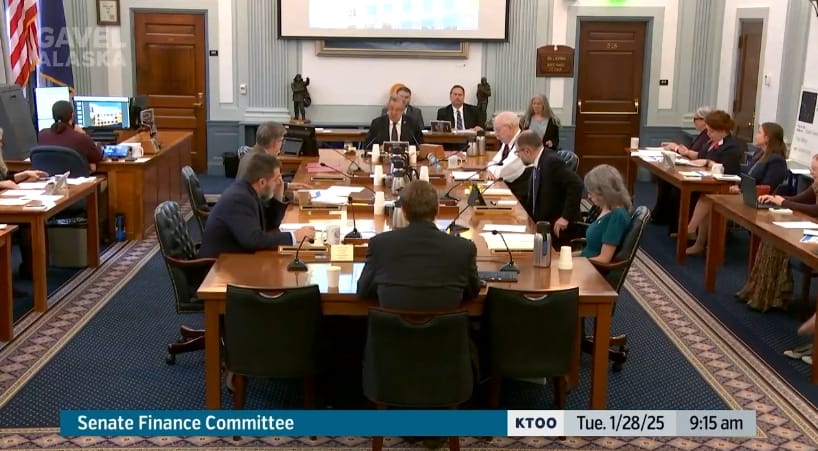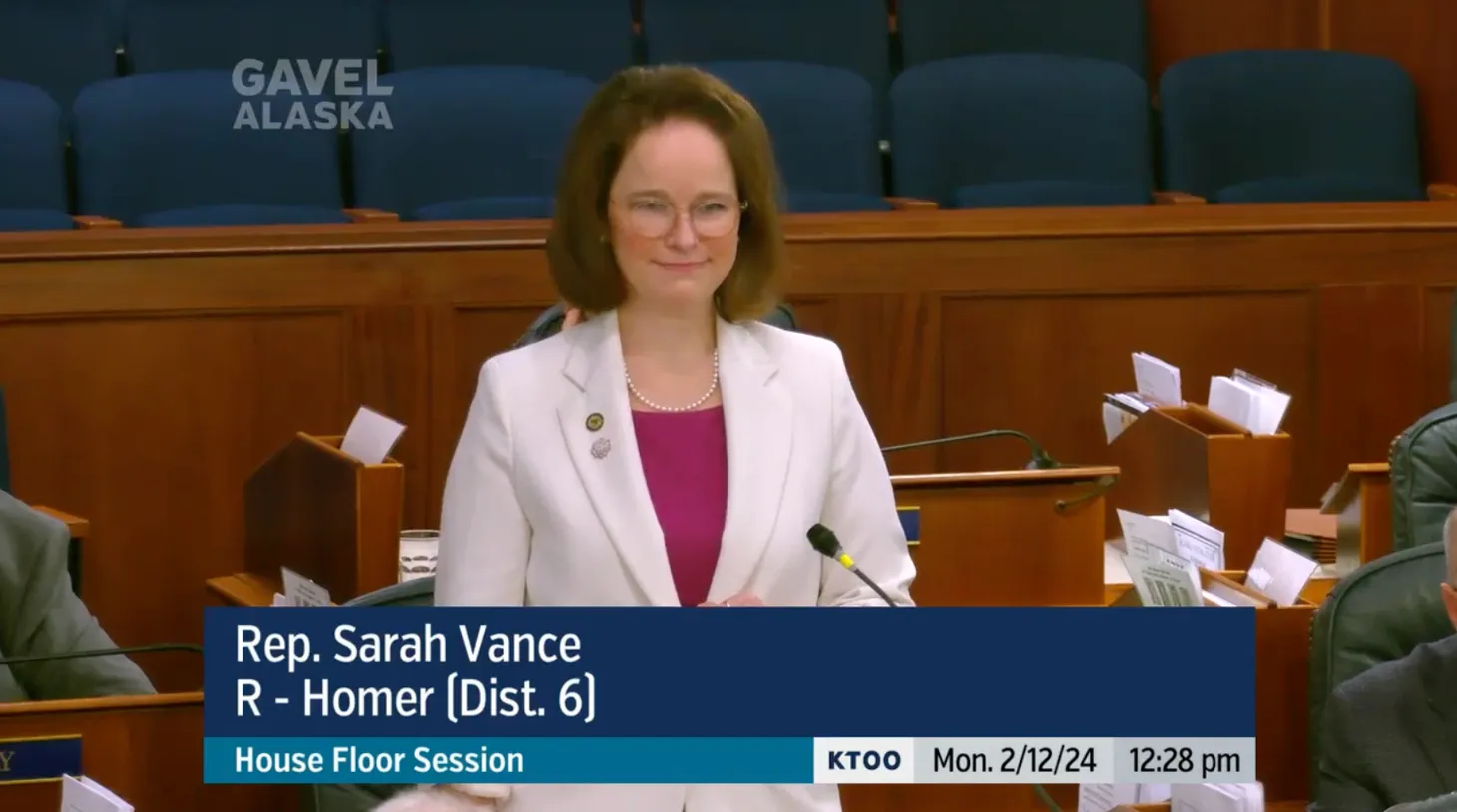Day 8: ‘A five-alarm fire’
Trump's halt threw Alaska, which receives the most federal funding per capita, into chaos and is a timely reminder of the state's budget challenges.

Hello, Alaska! It’s Day 8 of the legislative session.
In this edition: The second week of the Trump presidency opened with a fresh round of chaos after he issued a blanket freeze on federal grants and loans. Ostensibly, it’s part of a plan to exterminate “woke” programs, but the vague language has left everyone, including much of the federal government, which touches pretty much every aspect of life in Alaska. It’s really a “Who knows” situation with some dire consequences. In Juneau, the evolving fallout puts a timely spotlight on the state’s budget situation, which the Legislature has been busy unpacking during the first eight days of the session. Much of that talk has illustrated the shortcomings of the governor’s hope-and-a-prayer budget proposal, meaning legislators will again make major changes to rein in the budget and shore up services. After all, what Gov. Mike Dunleavy has proposed is a $1.5 billion deficit while managing to spend $180 million less on public schools. The Legislature is already on its way to fixing that, with a BSA bill set for a big public hearing on Wednesday. Oh, and Dunleavy has his annual State of the State tonight.
Current mood: 😵💫
‘A five-alarm fire’

The Trump administration launched one of the farthest-reaching presidential actions on Monday night when its budget office issued a memo ordering the entire federal government to halt most grant and loan programs, throwing everything from college programs, tribal programs and infrastructure to Meals on Wheels, food stamps and Medicaid into chaos. While the White House has claimed things that would be most widely felt—food stamps and Medicaid—weren’t, in fact, covered by the order, we’ll see. It’s not like they’re operating with much credibility (and, frankly, the same should probably go for whatever assurances from Trump-friendly states that social safety net programs they operate will be unaffected).
That said, as of this afternoon, the “We’ll see” part was delayed after a federal judge paused the order through next Monday. But then again, that depends on Trump’s willingness to obey a system that has failed to hold him accountable.
Fun times.
In Alaska, where federal funding affects just about everyone in one way or another, the mood is expectedly pretty bleak and panic-filled. Alaska receives the most federal funding per capita by a pretty wide margin, and nearly a third of state spending comes from federal sources. When it eventually goes into effect, even a short-term interruption — presumably there will be a point where the “woke” has been rooted out and things can resume — “would be catastrophic for a state like ours,” Laurie Wolf, the president of the Foraker Group, which supports and boosts nonprofits, told the Anchorage Daily News.
“Every channel of communication has been blowing up with people asking, ‘How will this affect me and the work I do in Alaska?’” she told the outlet. “Nothing will be untouched, and Alaskans will feel this deeply.”
The Alaska Food Policy Council condemned the grant freeze, warning that it could threaten the state’s food system.
“Federal funds are essential for a range of programs, including some that provide food security to tens of thousands of Alaskan children and families. These funds are critical for everything from school meals to agricultural research, and this funding freeze risks destabilizing them,” said the group in a statement. “The White House’s inconsistent messaging leaves uncertainty about which programs will be affected and when. Most concerning is the executive branch bypassing Congress’s authority over federal appropriations. The freeze vaguely suspends funding for programs deemed to ‘undermine the national interest,’ adding to confusion and concern.”
State legislators had few answers on Tuesday, but Sen. Bill Wielechowski called it a “five-alarm fire” that could trickle out to every corner of the state, including resource development. He said state hearings could be warranted.
“This really has the potential to throw a wrench in the state,” he said.
Unsurprisingly, Alaska’s Congressional delegation's reaction was mixed.
While U.S. Sen. Lisa Murkowski expressed alarm at the actions, both Sen. Dan Sullivan and Rep. Nick Begich III downplayed the concerns to varying degrees while lauding the president for taking a tough-guy approach to cutting spending.
“My constituents back home certainly have thoughts about it. Our phones have been ringing off the hook all morning,” Murkowski said. “[We are] wondering what it means, how long it’s git’s to last. It’s eIt’sthing from a small dam project — a small hydro project down in the Angoon area — to people concerned about everything from housing to water infrastructure projects.
“Unlike many who have preceded him in the office, the President intends to deliver on his promises to ensure American tax dollars are reasonably deployed,” Begi” h said, according to KTUU. “As we wrestle with a federal government that has grown to great excess, we have a responsibility to future generations of Alaskans to ensure we are not needlessly running up the balance on our nation’s card.”
More: ADN, KTUU, Alaska Public, Peninsula Clarion
‘It’s laughable’

The whole situation comes at a timely moment in the legislative session when the Finance Committees are busy getting up to speed on the state’s fiscal crisis. Should Trump’s pause affect social safety net programs, there will be a push for the state to step in, but just how much the state can actually help isn’t looking great. Restraint seems to be the word of the day as the legislators look at what’s not in the governor’s budget, with legislators expressing little appetite for the $1.5 billion deficit proposed by Gov. Mike Dunleavy while also pointing out that it proposes funding education by about $180 million less than the current year. And that’s not to mention other costs unaccounted for by the Dunleavy administration.
The House Education Committee is set to hold two sessions of public testimony on HB 69, Rep. Rebecca Himschoot's bill to raise the state's per student funding formula, known as the Base Student Allocation or BSA. The measure would enshrine a series of BSA increases, raising it by $1,808 over three years. It would also link funding to inflation after that.
The hearings are at 8 a.m. and 5 p.m. Find info on testifying here.
Even backing out the big dividend proposed by the governor to the 75-25 split of Permanent Fund revenue leaves the state with next to no breathing room.
“We’re still in trouble here. ... I don’t think the sentiment among Alaskans is to pay $180 million less for education this coming year than we did last year,” said Juneau Sen. Jesse Kiehl after a presentation laying out the discrepancies in the governor’s budget by Legislative Finance Division Director Alexei Painter. “As we look at these things and start to think about that capital budget number or other numbers in agency operations, boy, it’s worse than this.”
The governor's budget also proposed spending down about half of the state's nearly $3 billion Constitutional Budget Reserve, a move that Painter explained would erase much of the state's rainy-day account that would be useful for exactly the kind of situation Trump created on Monday.
"The announcement yesterday from the federal government is a great example of why we also need perhaps a shock absorber," he said, noting even a couple weeks interruption to Medicaid could mean massive costs for the state. "That's why we need to keep some money in reserve, not just for that regular cash flow, but when events like that happen, having a larger fund balance means you're better able to withstand something coming up, right? Like the federal government pausing payments or other unexpected effects."
There isn't an agreed-upon minimum amount for the state to keep in savings, but Senate Finance co-chair Sen. Bert Stedman noted Revenue Commissioner Adam Crum suggested last week the minimum balance could be just $500 million. Stedman appeared uncomfortable with even just $3 billion, noting that the current course of action requires some kind of change to ensure the budget stays balanced.
"We don't have four or five years of cushion. So the $3 billion might look like a big number, but it may be gone on the next inaugural of the next governor," he said. "$500 million leaves us no shock absorber and a year and a half to two years implement taxes. It's laughable. It's laughable."
Why it matters
I've had two big takeaways from the first round of legislative hearings on the budget.
First, the governor's budget isn't a very realistic look at Alaska's budget situation. It proposes a PFD at a level that the Legislature will not fund while also omitting several expenses that even he concedes will be coming. So, while the $1.5 billion deficit is obviously an inflated number, where we actually stand will take some unpacking to understand. The Legislature hasn't given the governor's budget proposals much weight, and it's not looking like that will change in his last two years in office.
Second, it's probably wise to pump the brakes on hopes the new legislative coalitions will deliver big-time spending increases on pretty much any front. While higher education funding is certainly on the table, the final number on it and other much-needed programs will be boxed in not only by what can escape Gov. Dunleavy's line-item veto but also by the cold, hard reality of a tight budget. Perhaps legislators will give a crack at new revenue a shot, but that also brings you back to a process that dead ends at Dunleavy's veto pen.
Follow a short thread: The Senate Finance Committee reviews the budget
Stay tuned.
The Alaska Memo Newsletter
Join the newsletter to receive the latest updates in your inbox.




